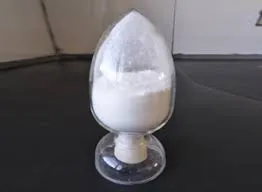Understanding Physical Water Treatment A Comprehensive Overview
Water is an essential resource for life, and its quality directly impacts both human health and the ecosystem. A significant number of water sources are contaminated with pollutants, leading to the need for effective treatment methods. Among the various water treatment techniques, physical water treatment stands out for its straightforward processes and efficiency in removing contaminants. This article delves deeper into what physical water treatment entails, its methods, advantages, and its critical role in ensuring accessible clean water.
What is Physical Water Treatment?
Physical water treatment refers to a set of processes that use physical means to remove solid contaminants and impurities from water, without modifying the chemical composition of the water itself. Unlike chemical treatment which may involve the addition of various chemicals to precipitate solids, physical treatment techniques utilize natural forces and mechanical processes.
Common methods of physical water treatment include filtration, sedimentation, flotation, and adsorption.
Key Methods of Physical Water Treatment
1. Filtration Filtration is perhaps the most recognized physical water treatment method. It involves passing water through a filter medium that captures suspended particles, microorganisms, and larger contaminants. Filters can be made from various materials, including sand, activated carbon, and membranes. The choice of filter material often depends on the specific contaminants to be removed. For instance, activated carbon is highly effective in removing organic compounds and improving taste and odor.
2. Sedimentation This natural process relies on gravity to separate solid particles from liquids. In a sedimentation tank, water is allowed to sit undisturbed, permitting heavier particles to settle at the bottom. The clearer water can then be siphoned off from the top. Sedimentation is especially useful in treating wastewater and preparing water for further treatment steps.
3. Flotation Flotation is a process similar to sedimentation but involves the introduction of air bubbles, which attach to solid particles, causing them to rise to the surface. These floated materials can then be removed as a sludge. This method is particularly effective for removing fats, oils, and grease from industrial effluents.
4. Adsorption This method utilizes solid materials to attract and hold pollutants on their surface. For example, activated carbon is commonly used to adsorb various dissolved organic and inorganic compounds from water. Adsorption is widely employed in water purification applications, especially when targeting trace contaminants that are difficult to remove by other methods.
physical water treatment

Advantages of Physical Water Treatment
Physical water treatment methods offer numerous advantages
- Simplicity These processes are generally straightforward and easy to implement, often involving minimal technical expertise. - Cost-effective Physical methods tend to be less expensive compared to chemical treatments, particularly when it comes to operational and maintenance costs.
- Environmental benefits Since physical treatment does not involve the use of chemicals, it minimizes the introduction of additional pollutants into the water system and has a lower environmental impact.
- Immediate results Physical treatments provide instant results in terms of contaminant removal, making them suitable for emergency situations where quick clean water access is critical.
Challenges and Considerations
While physical water treatment is effective, it is not without its challenges. One significant limitation is that these methods may not be able to remove dissolved contaminants or specific pathogens. Therefore, physical methods are often used in conjunction with chemical or biological treatments to achieve comprehensive water quality improvements.
Furthermore, the efficiency of physical treatments can vary depending on factors such as water turbidity, temperature, and the types of contaminants present. Regular maintenance and monitoring of physical treatment systems are required to ensure optimal performance and longevity.
Conclusion
Physical water treatment plays a crucial role in the global quest for safe and clean drinking water. By employing methods such as filtration, sedimentation, flotation, and adsorption, we can effectively remove a significant amount of pollutants from water sources. Understanding these processes helps to appreciate the importance of investing in water treatment technologies and infrastructures. As challenges concerning water quality and availability continue to grow, the need for efficient and sustainable water treatment solutions becomes even more paramount. Embracing physical water treatment methods can significantly help in addressing these issues and ensuring a healthier future for all.

